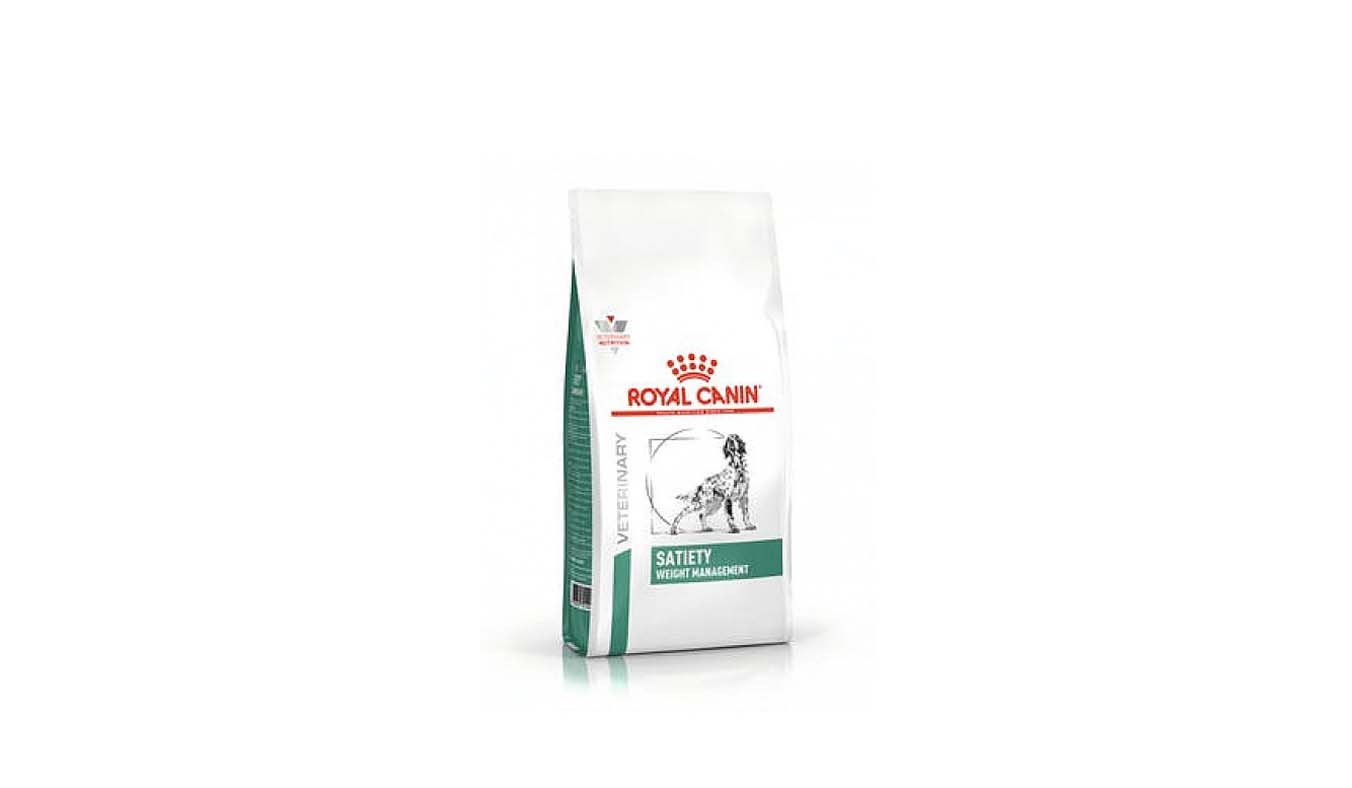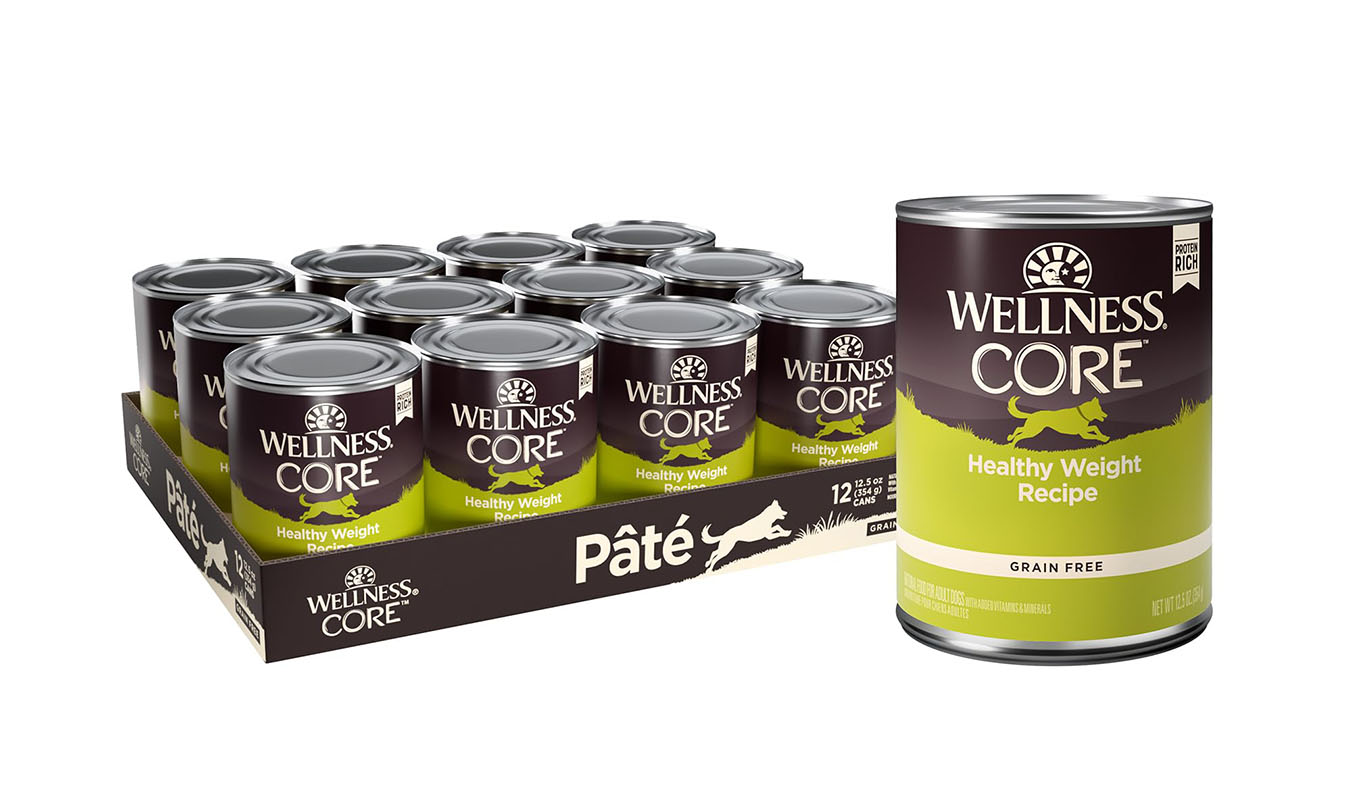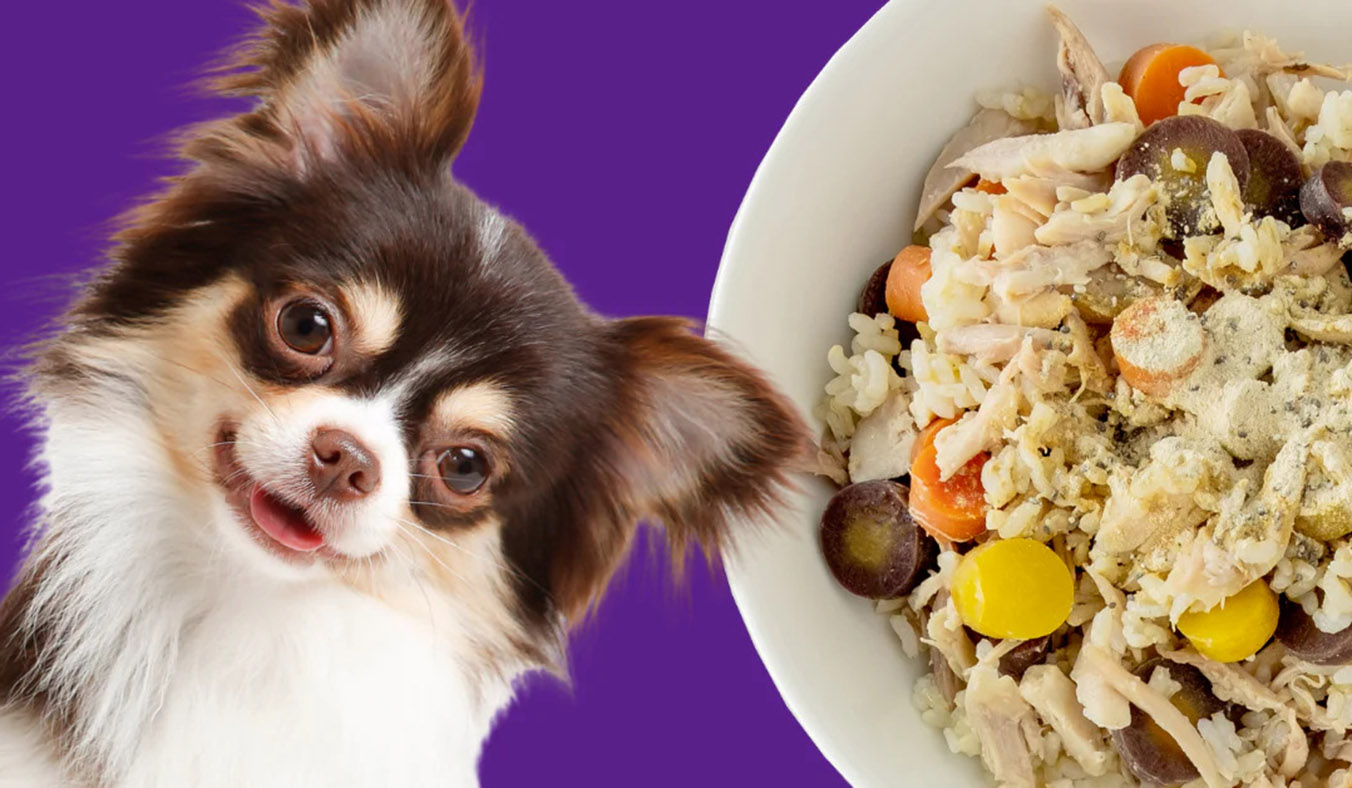Ensuring your dog has optimal health involves providing a balanced, high-quality diet. While kibble might seem convenient, there are alternatives that can better meet your dog’s nutritional needs. Here’s a guide on how to feed your dog without kibble, ensuring you cater to their health and well-being every day.
Why Consider Feeding Your Dog Without Kibble?
Kibble is often advertised as a complete and balanced diet for dogs, but several concerns about its quality can prompt owners to explore alternative feeding methods:
- Protein Quality: Many kibble brands use meat by-products, which can include less desirable parts like bones, feathers, and non-nutritive scraps. These by-products are often poorly digested and may lead to nutritional deficiencies or gastrointestinal issues in dogs. Additionally, some kibble may use meat meal, which is made from rendered animal parts, including those that are not human-grade.
- High-Temperature Processing: Kibble is manufactured through a process called extrusion, where ingredients are cooked at high temperatures. This method can destroy many of the natural nutrients found in raw food, such as vitamins and enzymes, which are beneficial for a dog’s health. Consequently, dogs may suffer from various issues like skin irritations, digestive problems, bad breath, and tartar buildup.
- Additives and Preservatives: To extend shelf life and improve taste, kibble often contains artificial preservatives, colors, and flavors. These additives can contribute to health problems such as allergies or sensitivities. Some dogs may also be sensitive to the grains and fillers used in kibble, which can cause gastrointestinal distress.
Feeding your dog a diet free from kibble can help mitigate these potential issues and offer a more nutrient-rich and digestible alternative.
How to Feed Your Dog Naturally
Feeding your dog a natural diet requires a good understanding of their specific nutritional needs:
- Protein and Fiber Balance:
- Protein: Dogs require approximately 75% of their diet to be high-quality protein, which can come from sources such as lean meats (beef, chicken, turkey), fish, and eggs. These proteins provide essential amino acids needed for muscle development and overall health.
- Fiber: About 15-20% of the diet should consist of fiber from fruits and vegetables. Fiber aids in digestion and helps maintain a healthy weight. Good options include carrots, spinach, and apples.
- Meal Frequency:
- Puppies: Require frequent feeding, typically 3-4 meals a day, as they have high energy needs and a fast metabolism.
- Adult Dogs: Generally benefit from 2 meals a day, which helps maintain steady energy levels and supports optimal digestion.
- Senior Dogs: May need adjustments based on their specific health conditions and activity level. Senior dogs might require fewer calories or a different balance of nutrients to manage weight and joint health.
BARF Diet (Biologically Appropriate Raw Food): The BARF diet is designed to mimic the natural diet of wild dogs and includes:
- High Protein: Consists of 80% meat, fish, and organ meats. This high protein content supports muscle growth and overall vitality. Raw meats should be sourced from reputable suppliers to ensure quality and safety.
- Vegetables and Fruits: The remaining 20% of the diet should include easily digestible vegetables and fruits. Good choices are carrots, apples (without seeds), and spinach. Avoid starchy vegetables like potatoes, which can be hard to digest.
- Bone Content: Include raw bones, which provide calcium and promote dental health. Bones should be raw and meaty; avoid cooked bones as they can splinter and cause injuries.
The daily amount of food should generally be about 3% of your dog’s body weight. For example, a 10 kg dog would need approximately 300 grams of food per day. Adjust quantities based on your dog’s specific needs and activity level.
Additional Tips for a Balanced Diet
- Variety: Rotate between different protein sources (e.g., chicken, beef, fish) to ensure a range of nutrients and prevent dietary deficiencies.
- Hydration: Always provide fresh water alongside meals. A balanced diet should be complemented with proper hydration.
- Supplements: Depending on your dog’s health and dietary needs, you may consider adding supplements such as fish oil for omega fatty acids or joint supplements for senior dogs.
- Monitoring Health: Regularly monitor your dog’s weight, coat condition, and overall health. Adjust the diet as needed and consult with a veterinarian to ensure your dog is receiving a well-balanced diet that meets all its nutritional needs.
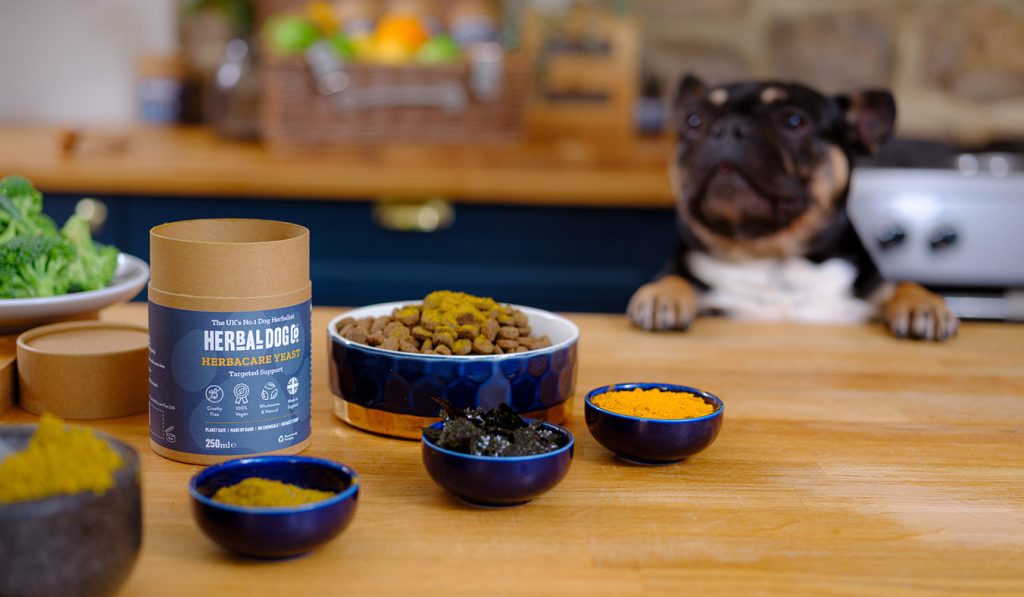
What Foods Are Beneficial and What Foods to Avoid
Beneficial Foods:
- Fresh, High-Quality Meats:
- Beef: Rich in protein, iron, and essential amino acids. Opt for lean cuts and ensure it’s fully cooked to avoid potential parasites.
- Lamb: Provides high-quality protein and is a good alternative for dogs with sensitivities to other meats.
- Chicken and Turkey: Lean sources of protein that support muscle development. Remove skin and bones before cooking.
- Organ Meats: Liver and kidneys are nutrient-dense and provide vitamins and minerals. However, they should be fed in moderation due to high vitamin A content, which can be toxic in large amounts.
- Sustainable Fish:
- Salmon: High in omega-3 fatty acids, which support skin and coat health, and have anti-inflammatory properties. Ensure the fish is cooked to eliminate parasites.
- Sardines and Mackerel: Good sources of omega-3 and omega-6 fatty acids. Choose fish that are wild-caught and free from added salt or sauces.
- Vegetables:
- Green Beans: Low in calories and high in fiber, beneficial for maintaining a healthy weight.
- Carrots: Provide beta-carotene, which supports vision and immune function. Serve raw or cooked in small, bite-sized pieces.
- Sweet Potatoes: Rich in vitamins A and C, fiber, and antioxidants. Cook thoroughly and serve in small portions.
- Pumpkin: Helps with digestive health due to its high fiber content. It can also alleviate constipation or diarrhea. Introduce New Vegetables Slowly: New vegetables should be introduced gradually to monitor for any adverse reactions or digestive upset.
Foods to Avoid:
- Toxic Foods:
- Onions, Garlic, Shallots, and Leeks: Contain compounds that can cause gastrointestinal upset, lethargy, and potentially lead to anemia.
- Potatoes: Raw potatoes contain solanine, a toxin that can cause nausea and vomiting. Cooked potatoes are generally safe but should be fed in moderation.
- Fruits and Nuts:
- Avocado: Contains persin, which can cause vomiting and diarrhea.
- Grapes and Raisins: Can cause acute kidney failure, leading to severe symptoms like vomiting, lethargy, and loss of appetite.
- Macadamia Nuts: Cause symptoms such as vomiting, tremors, and hyperthermia.
- Chocolate and Caffeine:
- Chocolate: Contains theobromine and caffeine, both of which are toxic to dogs. Symptoms include vomiting, diarrhea, increased heart rate, and seizures.
- Coffee and Tea: Both contain caffeine, which can lead to similar toxic effects as chocolate.
- Dairy:
- Cow’s Milk: Many dogs are lactose intolerant and can experience gastrointestinal issues like diarrhea and stomach upset.
- Small Bones:
- Cooked Bones: Can splinter and cause choking, blockages, or internal injuries. Raw bones are generally safer but should be given under supervision and be appropriate for the size of the dog.
Supplements:
- Turmeric: Known for its anti-inflammatory properties and may help with joint health and overall wellness. Use in moderation.
- Brewer’s Yeast: Provides B vitamins and can help with skin health and flea control.
- Salmon Oil: Rich in omega-3 fatty acids, it supports coat health and reduces inflammation.
Note: Always introduce supplements gradually and consult with a veterinarian to ensure they are appropriate for your dog’s health conditions and dietary needs.
Combination Feeding: Bi-Nutrition
Bi-Nutrition: Combining dry kibble with wet food offers a balanced approach to canine nutrition:
- Kibble Benefits:
- Digestive Health: Kibble is designed to be easily digestible and helps maintain healthy teeth by reducing plaque and tartar buildup.
- Convenience: Dry food is easier to store, measure, and can help maintain a dog’s dental health through mechanical abrasion.
- Wet Food Benefits:
- Hydration: Wet food has a high moisture content, which aids in hydration and can be beneficial for dogs with urinary tract issues.
- Palatability: Often more appealing to dogs due to its aroma and texture. It can also be easier to digest for dogs with certain health issues.
When Combining Foods:
- Quality Matters: Ensure both the kibble and wet food are high-quality and free from fillers, artificial additives, and low-grade proteins.
- Adjust Quantities: Monitor your dog’s weight and health, adjusting the portion sizes of each type of food as necessary to maintain optimal body condition.
Simple Homemade Recipe for Your Dog
Here’s a nutritious homemade recipe that is both easy to prepare and beneficial for your dog’s health:
- Ingredients:
- 200 grams of chicken breast: Provides high-quality protein.
- 2-3 carrots: Rich in vitamins and fiber.
- 2-3 zucchini: Provides vitamins and antioxidants.
- 150 grams of rice or pasta: Offers carbohydrates for energy.
- 3 tablespoons of vegetable oil: Adds healthy fats.
- Unsalted vegetable broth: Adds flavor and moisture.
- Preparation:
- Heat the Broth: In a pot, heat the unsalted vegetable broth.
- Prepare Ingredients: Cut the chicken and vegetables into small, bite-sized pieces.
- Cook: Add the chicken and vegetables to the pot with broth. Cook for approximately 30 minutes until everything is tender.
- Cook Rice or Pasta: Separately cook the rice or pasta according to package instructions. Drain and mix with vegetable oil.
- Combine: Mix the cooked chicken, vegetables, and rice/pasta. Allow the mixture to cool before serving.
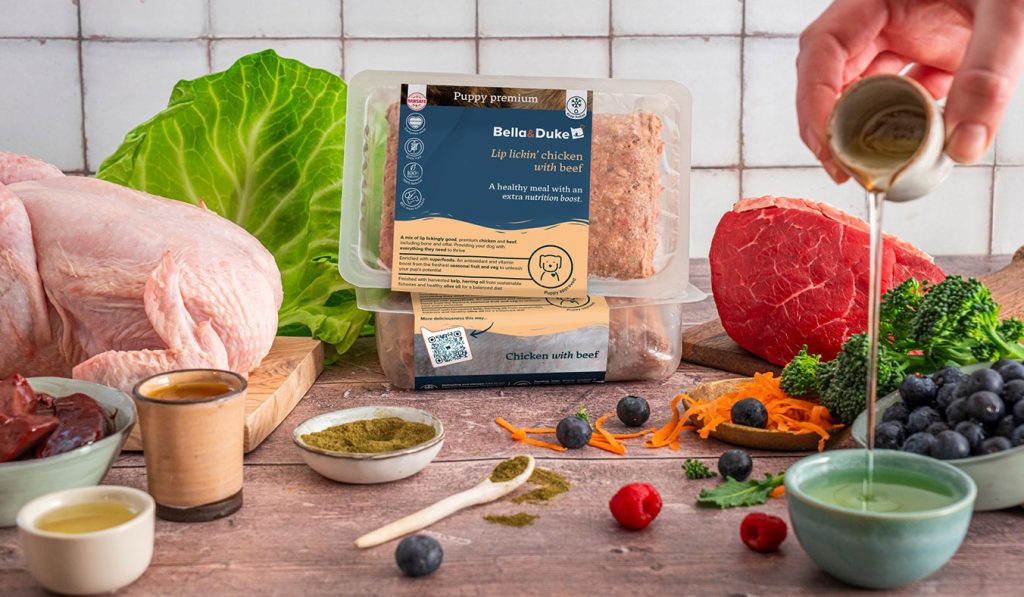
Note: Ensure the meal is served at room temperature. Always consult with your veterinarian to tailor the recipe to your dog’s specific dietary needs and health conditions.
Feeding your dog a natural diet requires careful planning to ensure all nutritional needs are met. By providing high-quality ingredients and adjusting based on your dog’s health and preferences, you can support their well-being effectively.

